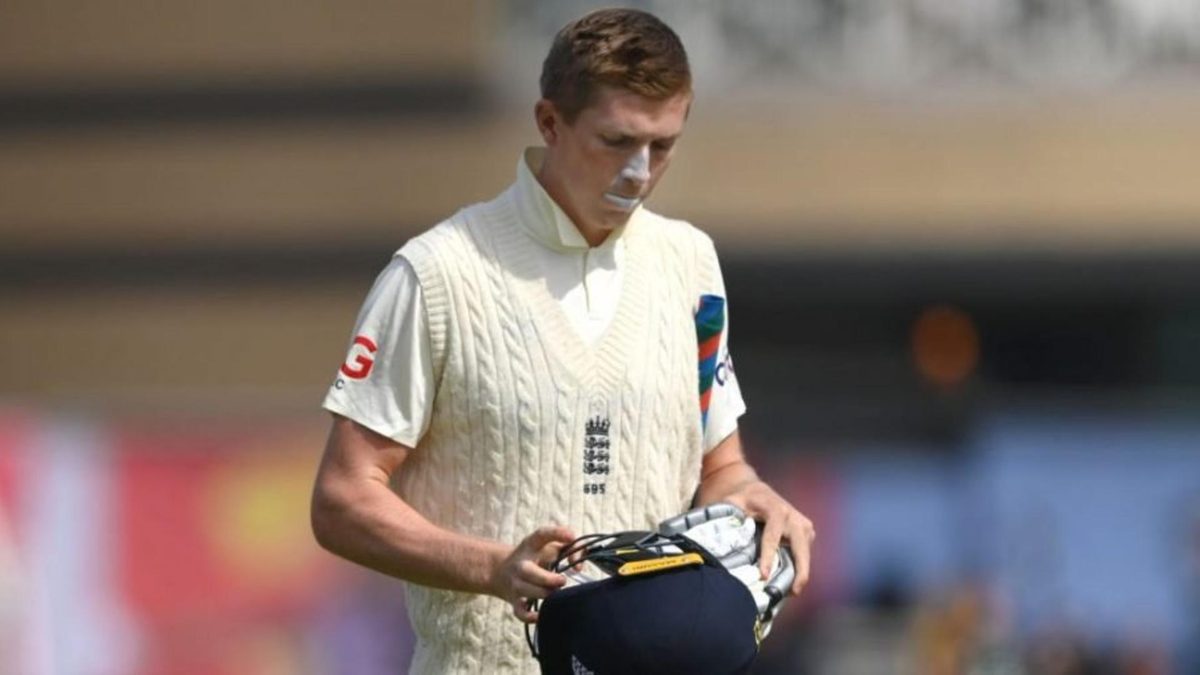
After a barren run, Zak Crawley could lose his place at No. 3 less than a year after his breakout 267 against Pakistan. Yas Rana looks at what might be behind his struggles, and what the future could hold for the young batsman.
Sign up to The Cricket Draft, powered by Wisden, an all-new, free-to-play fantasy game running alongside The Hundred, to win prizes and compete with your friends.
Zak Crawley is enduring a lean patch of historic proportions. A graphic in today’s Sunday Telegraph shows that he is currently experiencing the fifth worst calendar year of a specialist batsman in the game’s history. This isn’t just a momentary loss of form, it’s a run that extends across four series that have taken place in three countries across an eight-month period.
Zak Crawley is also responsible for one of the most eye-catching performances produced by a young English Test cricketer ever, one that had a queue of England greats, from Dexter to Vaughan, purring. The soundest judges were all in agreement: a special player had arrived. Bad players don’t hit Test match 267s very often. So then, what’s happened?
It’s worth going to back his initial selection back in 2019. Plucked out of county cricket without a record to speak of – a first-class average of 31 after 61 hits – he was probably Ed Smith’s most ‘galaxy brain’ pick but there was some logic behind it. Smith’s justification was that when Crawley encountered match scenarios that closely resembled Test cricket, he rose to the challenge and possessed a game – dominant on the back foot, comfortable against the quicks – that, in theory, should thrive at Test level.
And for a while, it looked like Smith was right. Counterintuitively, his 267 is so firmly wedged into the collective memory that it obscures other aspects of what was a relatively encouraging start to his Test career. He fared admirably against Anrich Nortje and Kagiso Rabada in South Africa and nudged ahead of Joe Denly in the pecking order after an excellent 76 against West Indies. The 267 wasn’t a total bolt from the blue.
But since then, with the exception of a brisk half-century at Ahmedabad, those green shoots of promise have wilted dramatically. He was extremely vulnerable to left-arm spin in Sri Lanka and India, falling seven times out of eight to Lasith Embuldeniya and Axar Patel. This summer, he has struggled for runs in the County Championship – 368 runs at 30.66 – and looked horrifically out of form in England’s three home Tests. His first-innings 27 against India at Trent Bridge was only his second score above 20 this year.
He is especially uncertain around his off stump, often uncomfortably prodding at balls that should be left alone. That indecision also partially explains why he was so comfortable against Pakistan. Though Afridi, Abbas and the Shahs form a formidable attack, none of them are traditional out-swing seamers. Afraid is a leftie who nips it back in, Abbas targets the stumps and Naseem’s main weapons are his pace and bounce – it is possible that Pakistan were the perfect opponents for Crawley to face at home.
Zooming out slightly, you don’t select a 21-year-old with a first-class average of 31 if your Test side is in rude health. A handful of noteworthy strengths doesn’t make you a great batsman. His white-ball record is outstanding, and with his long levers, aptitude against high pace and clean hitting – something that is still evident even when he struggles against the red ball – you wonder whether his game, at this point in time, is more suited to limited overs cricket. Someone who knows Crawley’s game well – his former captain at Kent, Sam Northeast – told the Two Hacks, One Pro podcast last year that he thought Crawley would first make a name for himself in white-ball cricket.
This isn’t to say he won’t be able to crack Test cricket. We saw last year just how high his ceiling is and it’s been said many times that his game is likely to suit Australian conditions, and failure in England does not automatically beget failure in Australia: just ask David Warner. The concern at the moment is that keeping him in the firing line against an attack as good as India’s, when the ball is swinging as much as it is, could make him unselectable come December 8. The list of alternatives to bat at three is not a long one – Dawid Malan, a touted replacement, averages even less than Crawley in Test cricket – but Haseeb Hameed is a man in some kind of form, something that can only realistically be said of Joe Root in the current England top seven.
There is plenty of evidence to suggest that Zak Crawley probably won’t become a top tier Test batsman, and there is some evidence to suggest that he will. It is worth remembering that he is only 23. Andrew Strauss played 100 Tests for England and didn’t debut until his 28th year. Root was left out shortly after his 23rd birthday and he didn’t turn out too badly either. But expecting a youngster to work out his game in the cauldron of Test cricket is unfair, unrealistic and quite possibly even detrimental to his long-term development. England might have a gem in their hands, and they need to handle him carefully.








